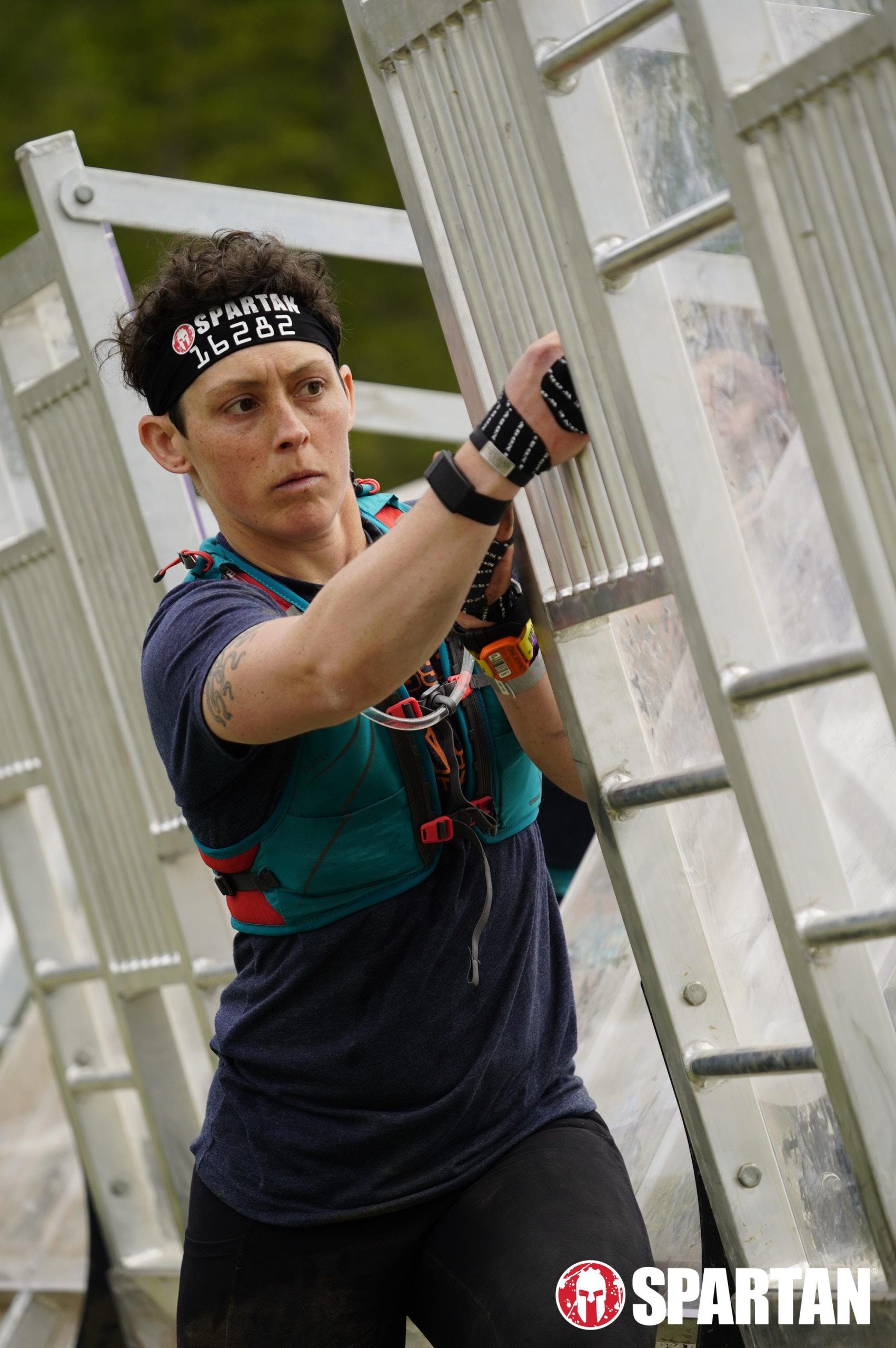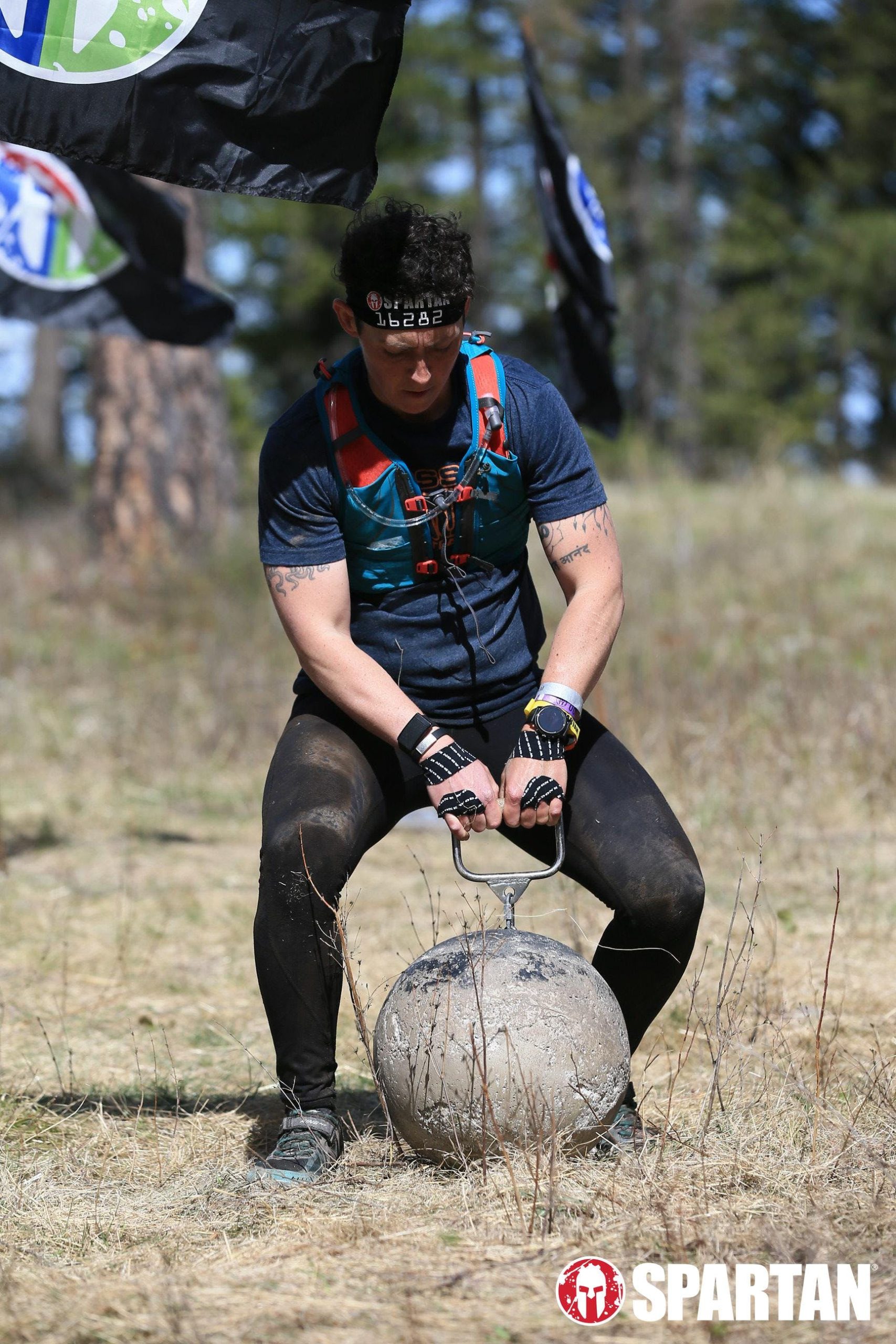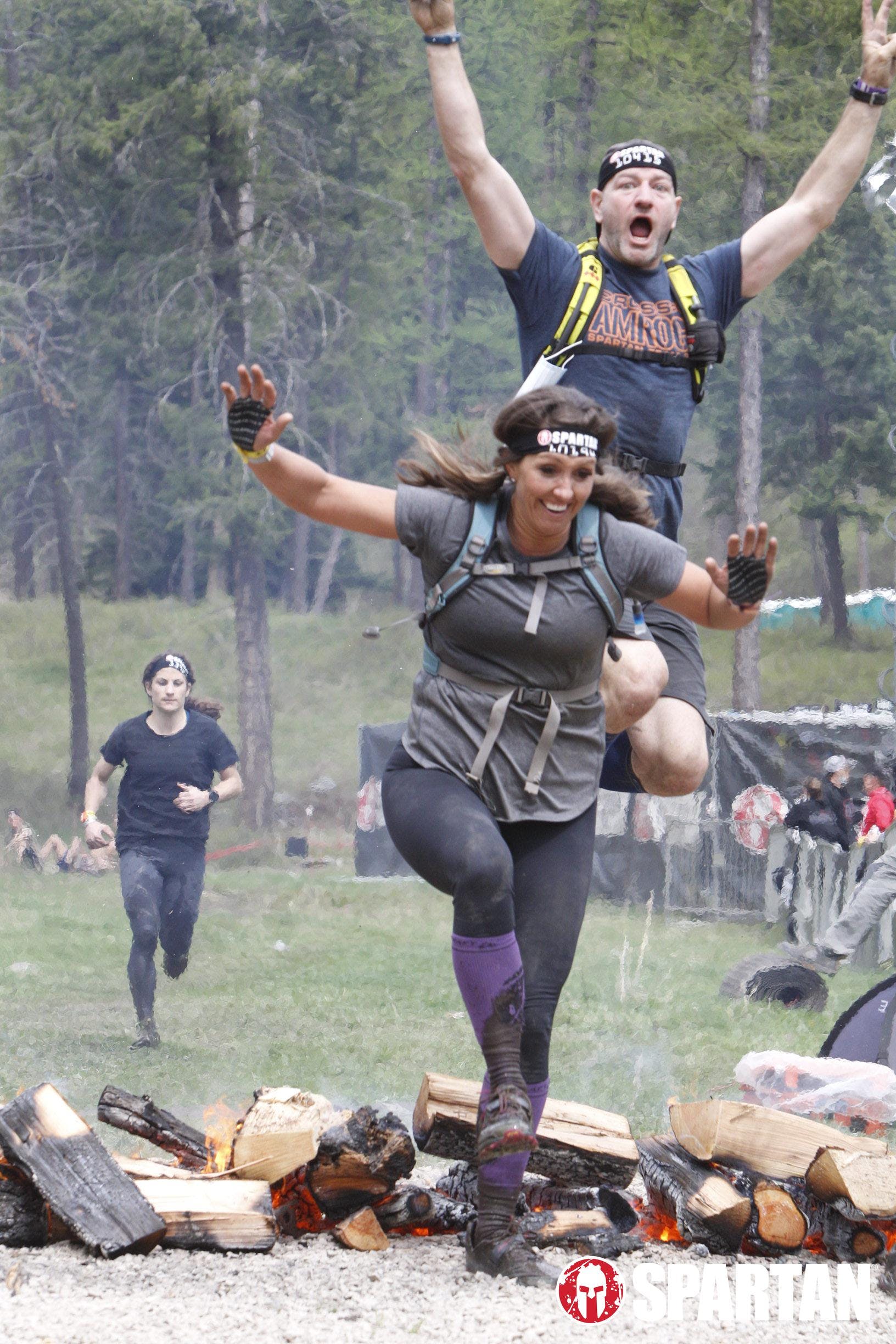Two INL employees find camaraderie, challenge in extreme obstacle races

To see them endure the rigors of a Spartan Race, you might think Shannon Havins and Heather McVey have steeled themselves to ultimate toughness, but there’s a lot more to it than that.
Working in Idaho National Laboratory’s Information Management directorate, they had a passing acquaintance at first. McVey is executive assistant to Director Robert Hillier, while Havins is the identity and access management lead. They got to know each other better when they discovered they both frequented the same gym.
Now both can flip tractor tires, scale walls and run half marathons, all in searing heat. Havins has taken to power lifting while McVey leans more toward tests of endurance. But in a race, at the gym or on the job, it’s empathy that sets apart a winner, they say.
For instance, in a race McVey carries mustard packets or pickle juice, both good sources of salt to keep muscles from cramping. She’s not stingy when she sees someone who appears to be in need. “You pass people you can tell are really struggling,” she said. “You don’t run by and say, ‘Ha! Ha!’ Instead, you stop and say, ‘Are you doing okay? Do you need fuel or salt?’”
McVey has been involved in CrossFit for eight years, Havins not as long. In fact, in 2018 she was overweight and suffering from both diabetes and chronic back pain due to compressed discs. It was INL’s employee health program, Virgin Pulse, that put her on path to where she is today.
“I could be the poster child for Virgin Pulse,” Havins said.

It started with keeping track of her number of steps in a day. “I was doing 2,000 steps a day, but I’d see someone who was doing more. So I wanted to do more,” she said. “Each time I’d pass somebody I’d pick another target.”
Spartan Race started in 2007 as a spinoff of the Death Race, which was a 48-hour endurance event. Founder Joe De Sena intended for it to be more appealing to a wider audience, and the first actual event was held in 2010. Today, the races are held across the U.S. and in 30 countries, including Canada, South Korea and Australia.
Would-be competitors have an array of race choices, such as a 3-mile sprint with 20 obstacles or a 30-mile run with more than 60 obstacles.
The obstacles vary from race to race, but they include jumping over fire, climbing under barbed wire, wall climbing and mud crawling. There’s javelin throwing, rope climbing, monkey bars and the “Hobie Hop,” in which a thick rubber band is placed around participants’ ankles and they hop through consecutive tires. Failure to fully complete any obstacles results in a 30-burpee penalty, which a runner must perform before continuing. (What is a burpee? It’s a fast-moving squat thrust, sure to take your breath away.)


Sound fun?
“If you don’t have it mentally, you can get discouraged very easily,” McVey said.
At a recent race she ran with two other gym members, Havins chose to stay and perform penalties with them, too, rather than chug ahead. “We’re very much a family,” she said. “No one’s taking themselves too seriously or competing with anyone but themselves.”
“They’re great friends I really like to spend time with,” said McVey. “That’s why you choose the people you do. I may break down, but someone will be there to help or encourage me.”
Hobbies are fulfilling, and fulfilled people make more productive employees. Hobbies unearth hidden skills, alleviate stress, unite you with others, and improve quality of life — all things that will help you function better at work. Discover the stories and unique interests of just a few INL employees.





